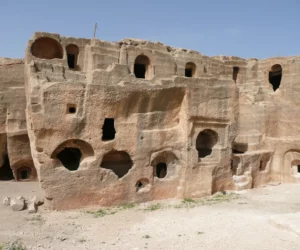The Rise and Fall of a Strategic Roman City Dara, also known as Daras, was once a vital fortress city on the border of the East Roman Empire and the Sassanid Persian Empire. Located in what is now the Mardin Province of Turkey, this city played a key role in the Roman-Persian conflicts of late…
Sasanian Empire
The Sasanian Empire, thriving from 224 to 651 CE, was the last imperial dynasty to rule Persia before the rise of Islam. Founded by Ardashir I, the empire replaced the Parthian Empire and became a dominant power in the Middle East. At its height, the Sasanian Empire’s reach extended from the Indus Valley in the east to the Eastern Roman Empire’s frontiers in the west. With its capital in Ctesiphon, near modern-day Baghdad, the empire became a center of culture, learning, and trade. Under Sasanian rule, Persian art and architecture flourished. The empire’s legacy can be observed in its grand palaces and fire temples, which fostered the spread of Zoroastrianism.
As a major rival of the Eastern Roman Empire, the Sasanian Empire engaged in many conflicts that shaped the geopolitical landscape of the region. They are remembered for their intricate governance system and the introduction of many bureaucratic reforms. The empire played a significant role in shaping the economic and cultural life of its time. The Great Royal Road, an ancient highway that traversed the empire’s territory, was essential for commerce and communication. The Sasanians were also notable for their advancements in science and technology. The Sasanian Empire’s contributions to art, culture, and statecraft left an enduring legacy. It influenced subsequent civilizations in the region and helped shape the course of history in the Islamic Golden Age following the empire’s fall.
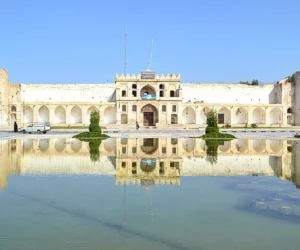
Borazjan Castle
Borazjan Castle is a significant historical structure located in the city of Borazjan, in Bushehr Province, Iran. It is known for its strategic position and architectural significance, reflecting the region’s historical importance in trade and military defense. Historical Background Borazjan Castle was built during the Qajar dynasty, which ruled Iran from 1789 AD to 1925…

Qal’eh Dokhtar
The Majestic Qal’eh Dokhtar: An Ancient Marvel Qal’eh Dokhtar, also known as Dokhtar Castle, stands as a testament to ancient engineering and architectural prowess. Built by Ardashir I in 209 AD, this impressive fortress in Fars, Iran, tells a story of defense, royalty, and ingenuity. Name and Dedication The name “Qal’eh Dokhtar” translates to “The…
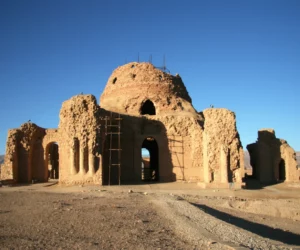
Sarvestan Palace
Unveiling the Sassanid Palace of Sarvestan: A Journey Through History Located in the Iranian city of Sarvestan, about 90 kilometers southeast of Shiraz, lies the Sassanid Palace of Sarvestan, also known as “Kakh-e Sassani-ye Sarvestan” in Persian. This captivating 5th-century structure offers a glimpse into the architectural brilliance and historical legacy of the Sasanian Empire….
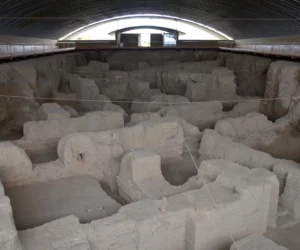
Ecbatana
Introduction to Ecbatana Ecbatana, known in Old Persian as Hagmatāna, meaning “the place of gathering,” served as the ancient capital of the Median Empire. It was the first capital of Iran and later became the summer capital for both the Achaemenid and Parthian Empires. The city also played a significant role during the Seleucid and…
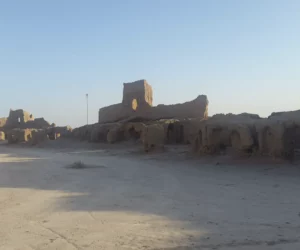
Damghan
Overview of Damghan Damghan, a city in the Central District of Damghan County, Semnan province, Iran, serves as the capital of both the county and the district. It lies 342 km east of Tehran on the main road to Mashad and sits at an elevation of 1,250 meters. Damghan stands out as one of the…

